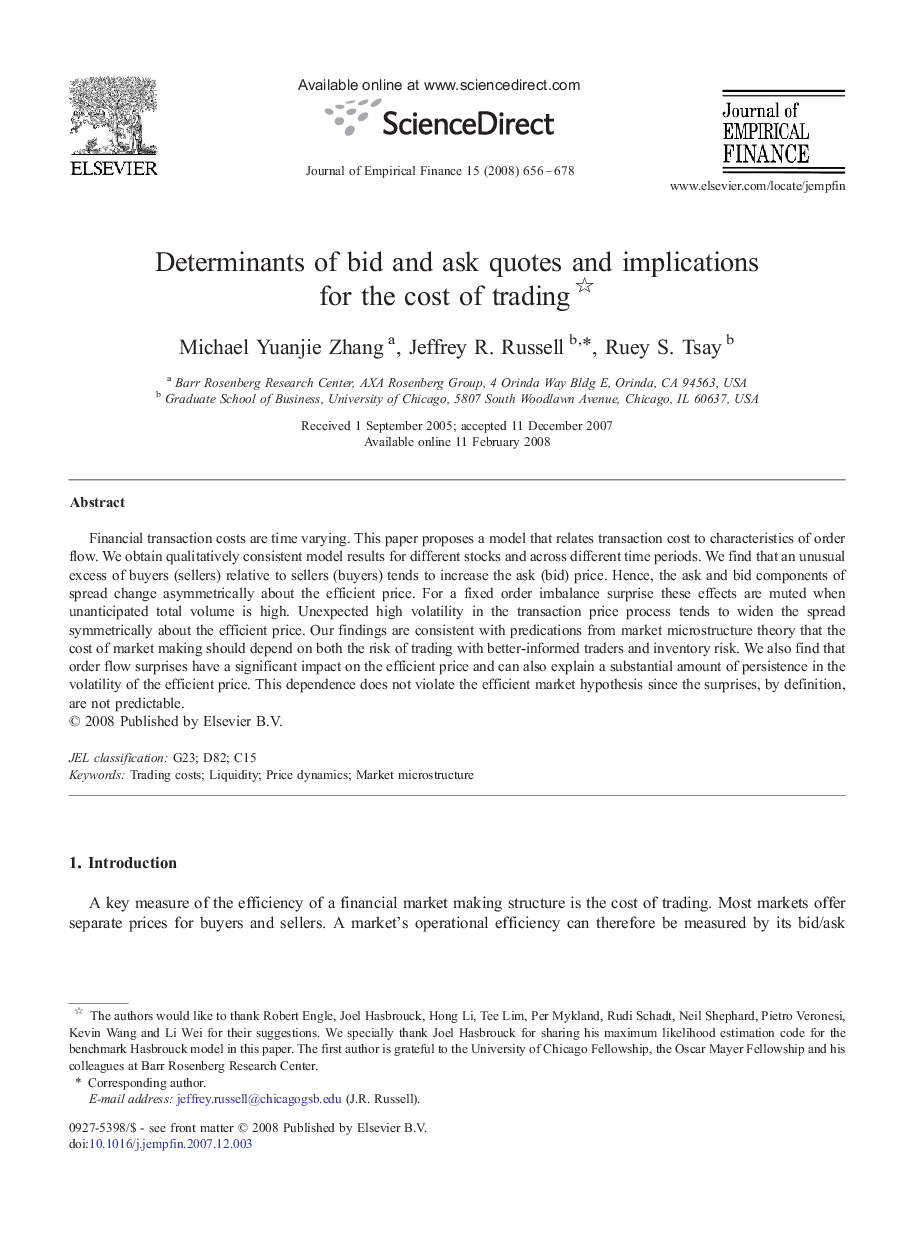| Article ID | Journal | Published Year | Pages | File Type |
|---|---|---|---|---|
| 958704 | Journal of Empirical Finance | 2008 | 23 Pages |
Financial transaction costs are time varying. This paper proposes a model that relates transaction cost to characteristics of order flow. We obtain qualitatively consistent model results for different stocks and across different time periods. We find that an unusual excess of buyers (sellers) relative to sellers (buyers) tends to increase the ask (bid) price. Hence, the ask and bid components of spread change asymmetrically about the efficient price. For a fixed order imbalance surprise these effects are muted when unanticipated total volume is high. Unexpected high volatility in the transaction price process tends to widen the spread symmetrically about the efficient price. Our findings are consistent with predications from market microstructure theory that the cost of market making should depend on both the risk of trading with better-informed traders and inventory risk. We also find that order flow surprises have a significant impact on the efficient price and can also explain a substantial amount of persistence in the volatility of the efficient price. This dependence does not violate the efficient market hypothesis since the surprises, by definition, are not predictable.
